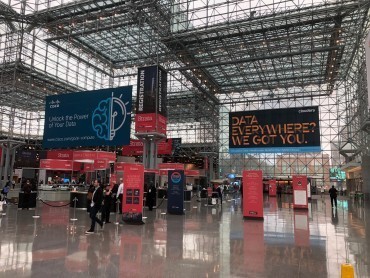
With practical guidance from experienced professionals and tailored strategies, organizations can navigate the complexities of cloud migration and platform modernization confidently, unlocking new opportunities for innovation and growth.
As the digital landscape evolves at a rapid pace, enterprises are continually exploring avenues to elevate their competitive edge and operational efficiency. One prominent strategy gaining prominence is the incorporation of cutting-edge advancements, such as AI technologies tailored for cloud environments and generative AI, into endeavors focused on cloud migration and modernizing existing platforms.
Cloud Migration involves transferring applications, data, and other business elements from on-premises infrastructure to cloud-based services to leverage benefits like scalability, flexibility, and cost-efficiency. Integrating AWS Spot instances, which offer spare EC2 capacity at up to a 90% discount compared to On-Demand pricing, adds value by providing cost-effective on-demand computing resources. Conversely, Platform Modernization involves updating and optimizing existing applications, systems, and processes to fully utilize cloud-native technologies like microservices architecture, containerization, serverless computing, and DevOps practices. This enhances agility, scalability, and innovation capabilities by enabling more efficient resource utilization and streamlined development workflows.
Hyperscalers like AWS, Google, and Microsoft provide essential tools for cloud migration and platform modernization. However, merely moving existing systems to the cloud may not be sufficient. It is crucial to recognize that a simple migration without rearchitecting based on new consumption models can lead to increased costs due to the inefficiencies inherent in older models. By leveraging the capabilities of hyperscaler tools in tandem with rearchitecting efforts, organizations can achieve greater efficiency and cost-effectiveness. For instance, AWS Migration Hub and AWS Server Migration Service streamline the migration process, but organizations must also consider rearchitecting their applications to fully leverage cloud-native features. Google’s Migrate for Compute Engine and Anthos offer tools for modernizing applications across hybrid and multi-cloud environments, emphasizing the importance of optimizing architecture alongside migration. Similarly, Microsoft’s Azure Migrate and Azure App Service aid in migration and modernization efforts, highlighting the need for a comprehensive approach to cloud adoption.
See also: How Migrations to Modern Data Platforms are Revolutionizing Business Intelligence
Understanding the synergies between hyperscaler tools and the necessity for rearchitecting ensures that organizations can maximize the benefits of cloud migration and platform modernization, driving efficiency and innovation in their operations.
While cloud migration holds the promise of improved operational efficiency, enhanced productivity, and increased innovation, it is essential to recognize that these outcomes are not guaranteed. The transformative potential of AI-driven automation in cloud migration cannot be overstated. By leveraging artificial intelligence and machine learning, organizations can streamline the migration process, identify optimal migration paths, and automate repetitive tasks, reducing errors, and accelerating deployment timelines, fostering innovation with emerging technology.
Focus on Cloud Migration and Platform Modernization
In the realm of cloud migration and platform modernization, it is imperative to establish a revisit cycle every three months or twice a year. This frequency aligns with the rapid pace of innovation seen on leading platforms. Architectural decisions and processes quickly become outdated, losing their value if organizations fail to capitalize on constant change and innovation. Effective change management and adoption strategies are paramount for success in cloud migration and modernization initiatives.
Change management in cloud migration involves evaluating the migration’s impact on existing workflows and infrastructure, identifying stakeholders, and communicating the migration’s benefits to secure buy-in. Additionally, adoption strategies should encompass comprehensive training and support for employees to adapt to new cloud-based tools and processes. Smooth transitions and minimal disruptions are essential elements to ensure the success of migration and modernization efforts.
Similarly, in platform modernization, change management focuses on evaluating the impact of modernization efforts on existing systems and processes, identifying areas for improvement, and engaging stakeholders throughout the modernization journey. Adoption strategies may involve incentivizing teams to embrace modernization initiatives, fostering a culture of experimentation and learning, and providing resources and support for developers to adopt modern technologies effectively.
Containerization technologies, such as Kubernetes, have also revolutionized application deployment and management. With 92% of respondents using Kubernetes in production, as per a CNCF survey, containerization plays a crucial role in platform modernization efforts. Containerization is like packaging an application with everything it needs to run smoothly, making it easier to move and manage across different environments. This enables greater portability, scalability, and efficiency, further enhancing the capabilities of cloud-enabling AI and generative AI. To maximize the benefits of containerization and ensure widespread adoption, organizations should focus on people enablement. This includes providing adequate training and support to teams transitioning to containerized environments, fostering a culture of collaboration and knowledge-sharing, and recognizing and rewarding innovation and best practices. Elaborating a bit more here, by using abstraction tools like Kubernetes, you help to avoid platform lock-in and allow the flexibility to scale across the various Hyperscaler platforms where it makes sense.
Serverless computing is another innovation driving cloud migration and platform modernization. Serverless computing is like renting a car when you need it instead of owning one all the time. Instead, cloud providers take care of everything behind the scenes, handling server management dynamically. Serverless computing is another innovation driving cloud migration and platform modernization. Serverless platforms abstract away underlying infrastructure, allowing organizations to focus solely on code development and execution. With serverless architectures, applications can dynamically scale based on demand, leading to reduced operational overhead and greater scalability. AWS Lambda, a serverless computing service offered by AWS, is a prime example of this model, enabling developers to build and run applications without provisioning or managing. Yet, to fully realize the potential of serverless computing, organizations must prioritize adoption and people enablement tailored to the context of migration and modernization.
A Final Word
In conclusion, integrating cutting-edge innovations such as cloud-enabling AI and generative AI, alongside robust change management, adoption, and people enablement strategies specific to cloud migration and platform modernization, is essential for driving success. By leveraging AI-driven automation, containerization technologies, and serverless computing, organizations can streamline processes, improve agility, and maintain a competitive edge. With practical guidance from proven, experienced professionals and tailored strategies, organizations can navigate the complexities of cloud migration and platform modernization confidently, unlocking new opportunities for innovation and growth.
By Scott Schlesinger with contributions from Joseph Coyle.





























